You Can!
Click this link and read away!
And I hope you’ll like it enough to pre-order some copies!!! (And enter into the contest for some great The Frame-Up swag!)
Click this link and read away!
And I hope you’ll like it enough to pre-order some copies!!! (And enter into the contest for some great The Frame-Up swag!)
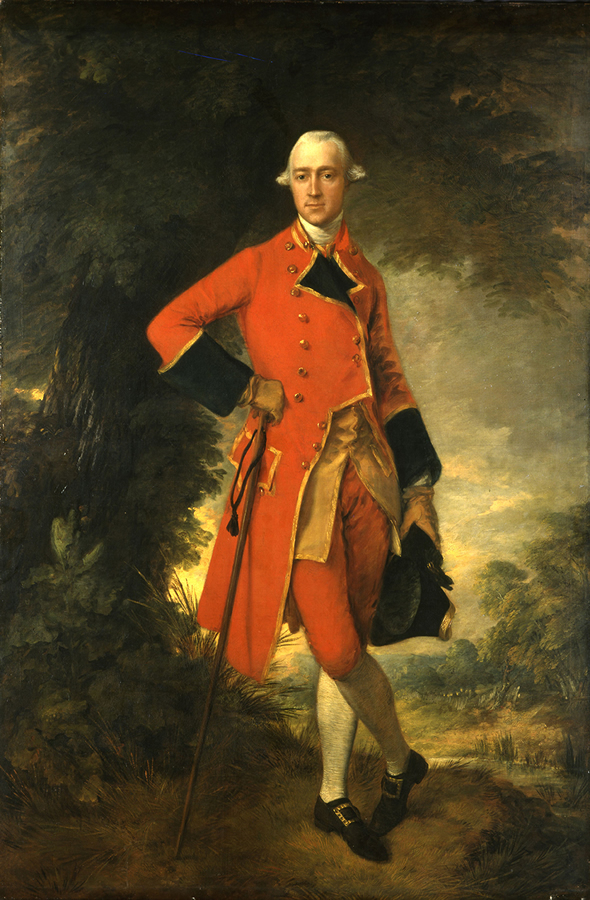
Lieutenant Colonel Edmund Nugent, Thomas Gainsborough, 1764, Oil on canvas
In the story, Mona needed a friend who was dashing, chivalrous, and larger than life. The romantic ideal in a scarlet officer’s coat. Enter Edmund.
In real life, the painting is nearly eight feet high. It dwarfs the viewer. The subject is sure of himself, elegant, and yet masculine all at once.
I love the idea that the residents are able to expand or contract depending upon the painting they are in. It is fun to think of Edmund being engaged to the tiny Madame Juliette, and yet when they are in the same painting, they are a perfect fit.
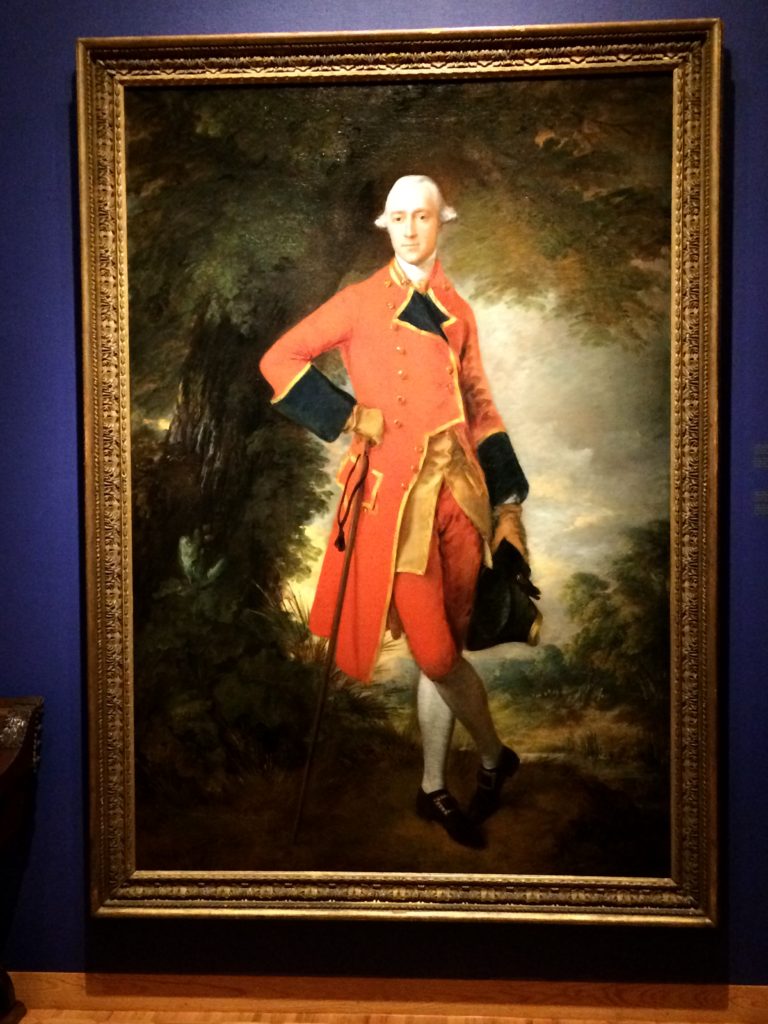
He takes up a whole wall!
Edmund is adventurous, but he is also the voice of reason for Mona.
“Do buck up,” Edmund said, patting Mona on the head. “He struck me as an affable chap. Even if he does suspect you are alive, I’m sure he will not break your confidence. That would be most ungentlemanly.” Nothing outraged Edmund more than a loose tongue.
Given his engagement to Madame Juliette, Edmund is also Mona’s romantic ideal.
Edmund, in his red military frock coat with the golden piping and brass buttons, was the epitome of dashing, thanks to his chivalrous eighteenth-century manners and his elegant oak walking stick.
But soon, not even Edmund can reason with Mona, whose desire to live a larger life and be friends with Sargent Singer threatens the gallery residents’ way of life.
I love how artist Ian Shoenhorr dips the Edmund on the cover in red:
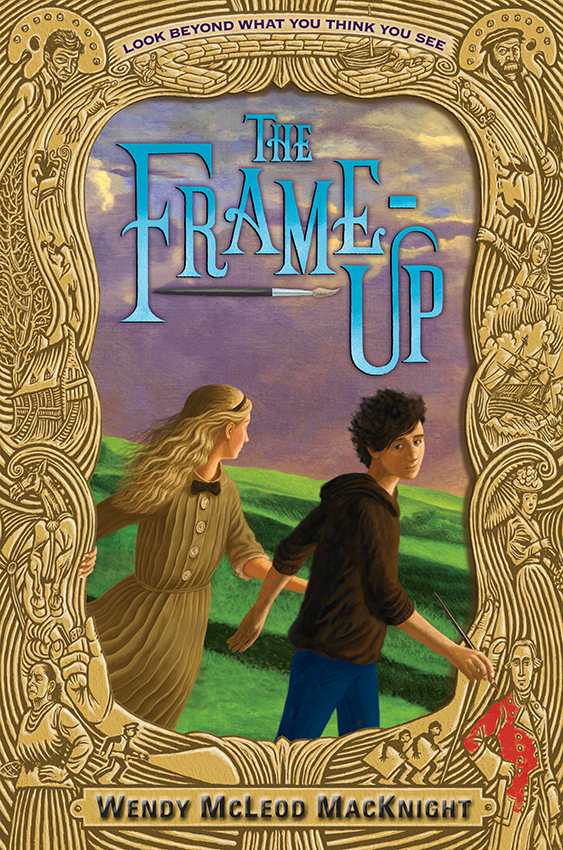
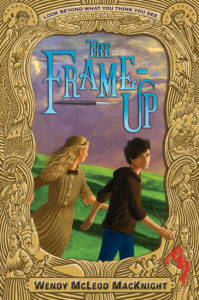

Gr 3-6–Inspired by the author’s lifelong love of art and the moving portraits in Harry Potter and the Sorcerer’s Stone, this inventive fantasy gives a second life to its painted subjects. For the past 100 years, Mona Dunn has watched the world go by. Like the rest of the pieces at the Beaverbrook Art Gallery, she is alive but only allowed to interact with the other painted inhabitants of the gallery. Communicating with the real world is strictly forbidden. These rules keep the gallery’s secret safe but make life lonely and boring for the eternally 13-year-old Mona. So boring, that one afternoon she is caught recklessly moving in front of the gallery director’s son, Sargent. Sargent’s own loneliness prompts him to develop a friendship with Mona. Their mutual insecurity with peers is relatable despite the magical circumstances. Readers will delight in the canvas world that exists on the other side of the frame. Mona’s gallery neighbors are equal parts quirky and endearing, while a sinister threat propels the plot forward. The book includes a full-color insert of the masterpieces referenced, which could be a great starting point for readers to imagine stories and worlds of their own. VERDICT Not just for art enthusiasts, this middle grade read paints fantasy, humor, and mystery into a satisfying tale about the power of friendship.–Sophie Kenney, Vernon Area Public Library District, IL
“A girl in a painting and a boy visiting the gallery she hangs in foil art thieves. …MacKnight entices with art critique and technique. …For anyone who’s wondered about the people inside the frames.”
Keep The Frame-Up love going! If you read the book and love it, please leave a review on Amazon.com, Amazon.ca, Chapters.ca and Barnes and Noble and Goodreads. Those reviews really help!
And if you haven’t yet pre-ordered, click here and learn about the great contest I’m running!
Lucian Freud’s Hotel Bedroom, painted in 1954, is one of the most popular and valuable paintings at the Beaverbrook Art Gallery, and it is also one of the most perplexing.
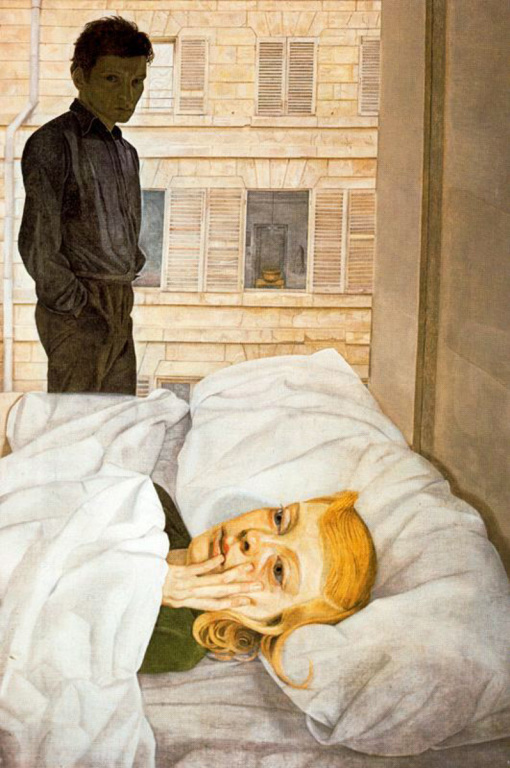
Lucian Freud, Hotel Bedroom, 1954, Oil on canvas
If you wanted to cast a villain for your story, really could there be anything better than this smoky-hued man, hovering in the background, staring down at the vacant-eyed woman in the bed?
In The Frame-Up, he is appropriately named Mr. Dusk, Lord Beaverbrook’s right-hand man, who spends his evenings spying on the other residents on behalf of the boss.
But Freud had painted Dusk as a grey, shadowy figure, and because of that, most of the residents of the gallery gave him a wide berth.
In the story, Mr. Dusk is a thorn in Mona’s side, who may or may not be out to get her.
She was back in the blank canvas when she spotted Dusk in a landscape a few paintings away. Did Max know he was breaking the rules? As if he sensed her presence, Dusk turned and looked in her direction. Then he disappeared, and she heard his footsteps coming towards her.
Dusk plays a pivotal role in the book, and is responsible for quite a few twists and turns in the story. And just like in the book, his placement on the cover makes him look mysterious and creepy.

I can’t wait for you to meet him!
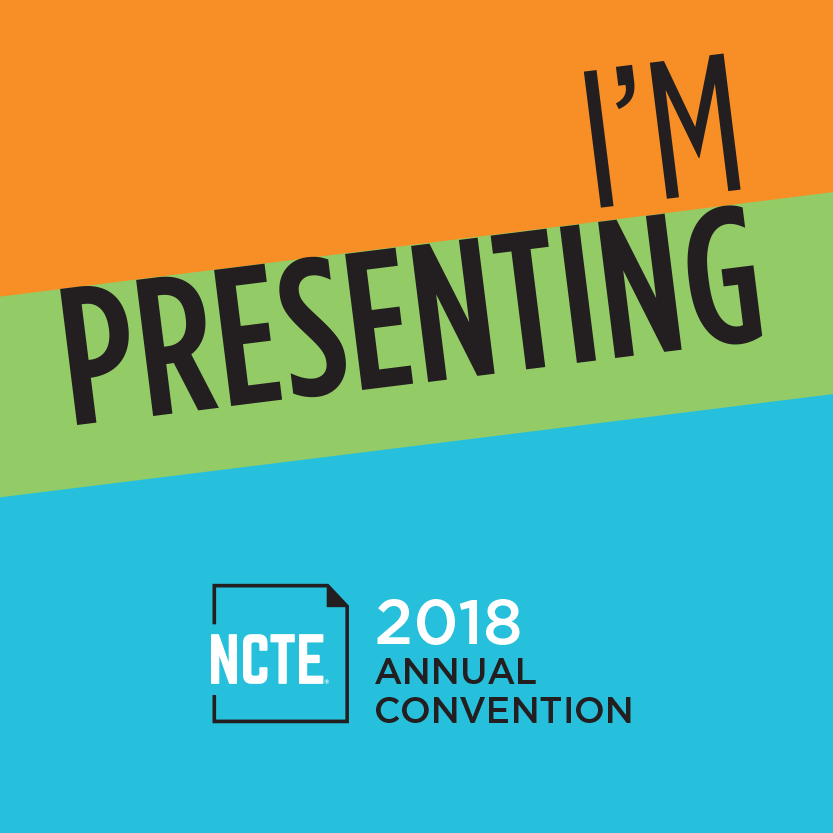
Culturally Responsive Classrooms and the Arts: Poetry Visual Arts, and Storytelling
Scheduled for: Friday, November 16, 2018 12:30-1:45 p.m.
NCTE stand for National Council of Teachers of English.
Through collaboration and community, shared stories and shared experiences, NCTE supports teachers and their students in classrooms, on college campuses, and in online learning environments.
For more than 100 years, NCTE has worked with its members to offer journals, publications, and resources; to further the voice and expertise of educators as advocates for their students at the local and federal levels; and to share lesson ideas, research, and teaching strategies through its Annual Convention and other professional learning events.
The National Council of Teachers of English is devoted to improving the teaching and learning of English and the language arts at all levels of education. This mission statement was adopted in 1990:
“The Council promotes the development of literacy, the use of language to construct personal and public worlds and to achieve full participation in society, through the learning and teaching of English and the related arts and sciences of language.”
I can’t wait!!! See you in Houston!
Recently, I was invited to talk about it at the gallery.
You can watch that talk here!
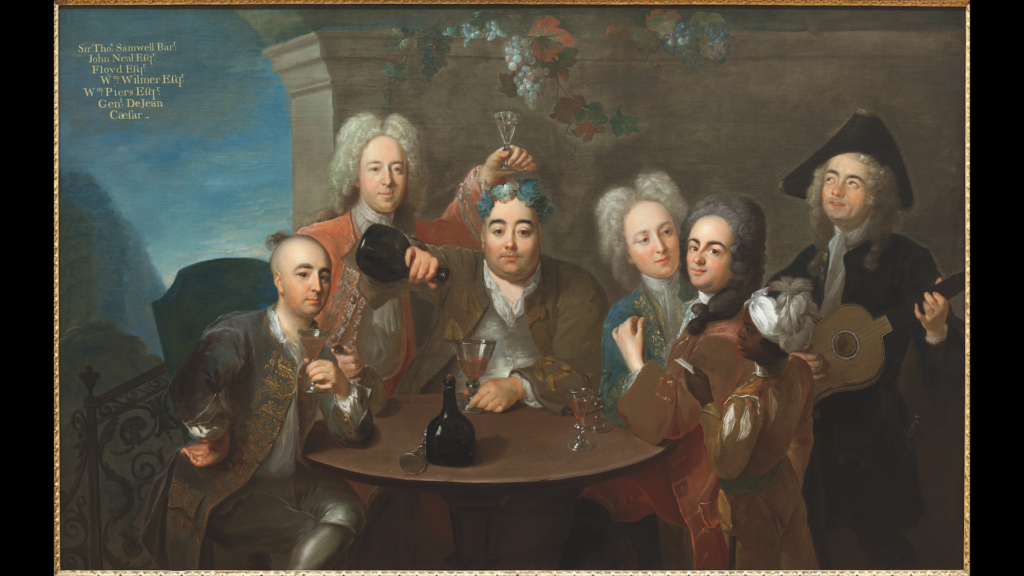
Philippe Mercier (French, 1689-1760)
Bacchanalian piece: Sir Thomas Samwell and Friends, c. 1733
oil on canvas
If you can do that (I can’t!), you can imagine the conviviality that exudes from this painting.
These gentlemen always remind me of the folks you see on a pontoon boat in the summer. They are here for a good time, not a long time. But alas, these fellows have been hanging out together for a LONG time…
Since imagining the world behind the frame these past years, I’ve been obsessed with what the lives of the residents are really like.
Is Sir Thomas Samwell regretting posing with his friends? Does he ever wish they’d go home? Do they simply slide under the table at some point in the evening, or does the “magical” elixir have no impact after all these years?
What I do know is that these gentlemen are lovely.
On the far left is Sir Thomas Samwell, then John Neal, Captain John Floyd, William Wilmer, William Piers, and Caesar, who started out as Sir Thomas’ servant, but after about six months in the painting, became everyone’s friend and now sits at the table. Last but not least, is General Louis deJean, who everyone calls the guitar general.
Mona likes everyone in this painting, but cannot keep the two Williams straight! Still, she trusts them with her philosophical questions:
Some with to interact with those outside the frame,” Caesar said, taking a melancholy sip of wine. “We come into our paintings with our original souls and memories, but sometimes it does not seem enough. I miss the real world at times. Alas, it is impossible to return.”
“Do you not think Max is able to do it?” Mona asked. She’d often wondered how he knew everything that was going on at the Beaverbrook.
Caesar shook his head. “Max is larger than life, but he is not larger than his painting. No one can leave his painting.”
One thing you may have noticed amongst the older paintings are that almost none of them contain people of colour.
That’s because only rich people could afford to have their portraits painted.
It’s important to realize that up until a certain point in history, art galleries represented a white perspective on the world. That is changing now, which makes art galleries like the Beaverbrook Art Gallery, more interesting places to live for their residents.
Once you’ve pre-ordered, email me at wendy@wendymcleodmacknight.com to let me know. No receipt necessary. Every pre-order will receive a personal note from me and 3 signed bookmarks. Plus, everyone who pre-orders will have their name automatically entered into a draw for the following:
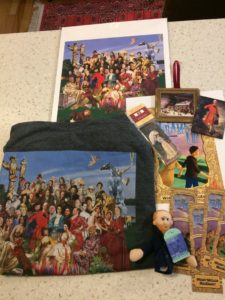
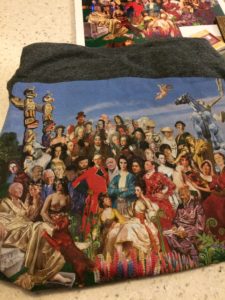
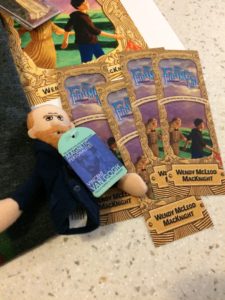
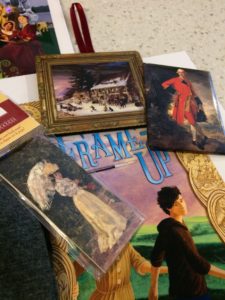
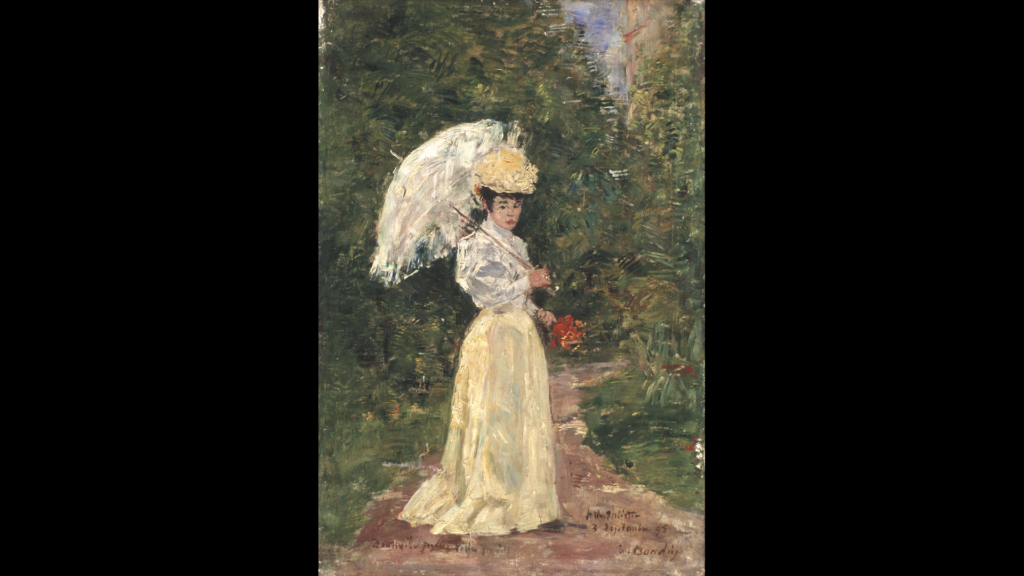
Eugene Boudin (French, 1824-1898) Madame Juliette dans le jardin, 1895 oil on panel
Madame Juliette is one of the most important characters in The Frame-Up.
She is Mona’s confidante.
Like Mona, her painting is also about to be restored.
She is also Mona’s ideal of the perfect romantic heroine, since Madame Juliette is engaged to be married to the dashing Lieutenant Colonel Edmund Nugant. (more on him later!)
Mona is to be a bridesmaid at their upcoming wedding. If only she’d thought to dress up more on the day she was painted!
(one of the rules of the world behind the frame is that you only have with you what the artist thought about while painting you, which for Mona is a blanket, a stool, and the same dress for over a hundred years.)
As befits the time in which she lived — the late 1800s — Madame Juliette is genteel, which is the exact opposite of Mona, who tears around the gallery as if it is her own private playground.
Still, Juliette is sympathetic to Mona; she remembers what is was like to be so young, and she understands Mona’s frustration at doing the same thing day in, day out.
“How curious,” Juliette said. “I believe he was watch- ing us.”
“I’m certain he was,” said Edmund. “Should I go after him?”
Mona stared at the now-deserted hilltop. “It would be a waste of time, Edmund; he’s long gone. I suppose Max has him spying on me, making sure I don’t step out of line again.”
“Max is only trying to protect you,” Juliette said. When she saw the face Mona pulled, she laughed. “Come, let us forget Monsieur Dusk. Perhaps a gelato would take your mind off Max.”
Later in the story, Mona and Juliette face their greatest challenge together. Will they survive?
Can you find Madame Juliette on the cover?

Since next week is Easter Weekend, there won’t be a post next Friday, so how about a giveaway!
What’s at stake:
How to enter to win:
The winner will be chosen April 4th. Good luck!!!!
Don’t worry if you don’t win – I’m cooking up a fantastic contest of goodies that everyone who pre-orders The Frame-up will be eligible for! More details on that to come in early April!
I think of that when I think of the characters of Andre Reidmor and Lady Macbeth.
Neither have huge roles, but both interact with Mona Dunn at crucial points in the story and we are left to wonder at their intentions and if there is more to them than meets the eye.
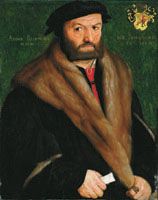
Andre Reidmor, Bartholomäus Bruyn the Elder, 1540. Oil and Tempera on panel
I love this painting at the Beaverbrook Art Gallery. Almost six hundred years old, the colours are still vivid and Andre makes me quake a little in my boots.
So I knew he had to be in the book, because if I was slightly intimidated by him, what would it be like for Mona Dunn and her best friend Clem?
What is this sleepover thing?” Andre Reidmor asked. His painting was almost six hundred years old, and he’d been on loan to another gallery when the last sleepover was held, in 1998.
“The children taking part in the art camps get to spend the night in the gallery at the end of the week,” Mona whispered, even though, if truth be told, she was a little afraid of the stern-faced giant bear of a man who strode about in his fur-trimmed green velvet cape.
What role does Andre play in The Frame-Up, and how does he survive the sleepover?
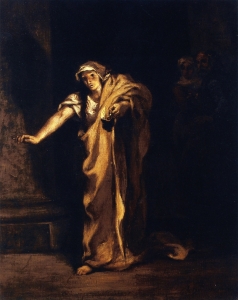
Lady Macbeth Sleep-Walking, Eugène Delacroix, 1850. Oil on canvas
I’ve always loved Delacroix and Lady Macbeth is one of my favourite Shakespearean characters, so it was a no-brainer to include her in the book.
I imagine her wandering the Beaverbrook Art Gallery every night, shouting “Out, damn spot!” much to the annoyance of all the residents of the gallery.
There’s an annoying person in every crowd, and you just know that having Lady Macbeth wandering the gallery at night has gotten on everyone’s nerves for decades.
It’s probably also tedious for Lady Macbeth herself, forever banished to the sleep world.
While I won’t tell you Lady Macbeth’s role in The Frame-Up, I will say that Mona breaks a powerful taboo vis-a-vis the painting.
And if you are ever in Paris, visit the Louvre and see Delacroix’s most famous work, Liberty Leading the People. It is spectacular!
Helena Rubinstein was a WOMAN.
According to Wikipedia:
Helena Rubinstein (born Chaja Rubinstein; December 25, 1872 – April 1, 1965) was a Polish American businesswoman, art collector, and philanthropist. A cosmetics entrepreneur, she was the founder and eponym of Helena Rubinstein Incorporated cosmetics company, which made her one of the world’s richest women.
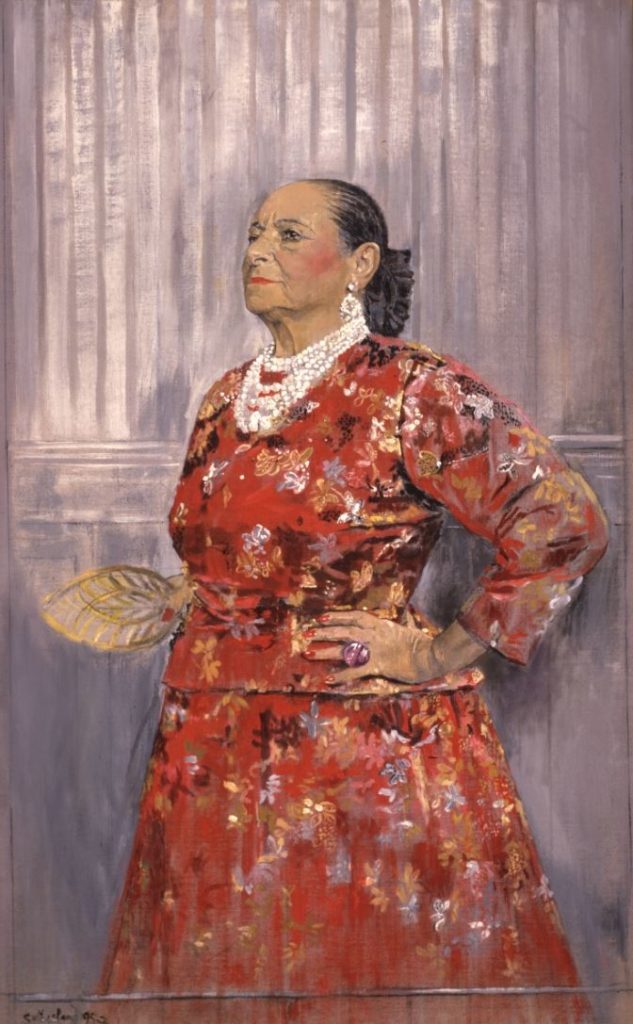
Helena Rubinstein, 1957, Graham Sutherland, Oil on Canvas
Upon seeing the portraits Graham Sutherland painted of her, Helena Rubinstein had this reaction (as described in her autobiography, My Life For Beauty (London: The Bodley Head, 1965):
They were both incredibly bold, domineering interpretations of what I never imagined I looked like. I had never seen myself in such a harsh light. Yet later, when they were exhibited at the Tate Gallery, although I scarcely recognized myself through Sutherland’s eyes, I had to admit that as paintings they were indeed masterpieces…One of the portraits was purchased by Lord Beaverbrook for his gallery in Fredericton, Canada. The other thanks in the entrance hallway of my New York apartment. Whenever I have a moment to study it, I wonder…am I really the austere, determined woman Sutherland painted so masterfully?
In The Frame-Up, Helena is not an austere, determined woman, but a convivial host, and a kind friend to Mona Dunn. Indeed, her painting is one of Mona and her friend Clem’s favourite places to visit. Helena plays a key role in the story, telling Mona and Clem about one of the most famous art thefts in the world, the theft of the Mona Lisa from the Louvre.
Madame Rubinstein chuckled and placed a heavily ringed hand on Mona’s shoulder. “The paintings here are superstititous, that is all. They do not like his methods. But if Director Dinger does not mind, why should I?”
“Do you think we can trust Sneely?” Clem asked.
“Is anyone trustworthy, Clement Cotterell? We are all human and therefor frail.”
I can’t wait until you can read The Frame-Up and meet Helena Rubinstein!
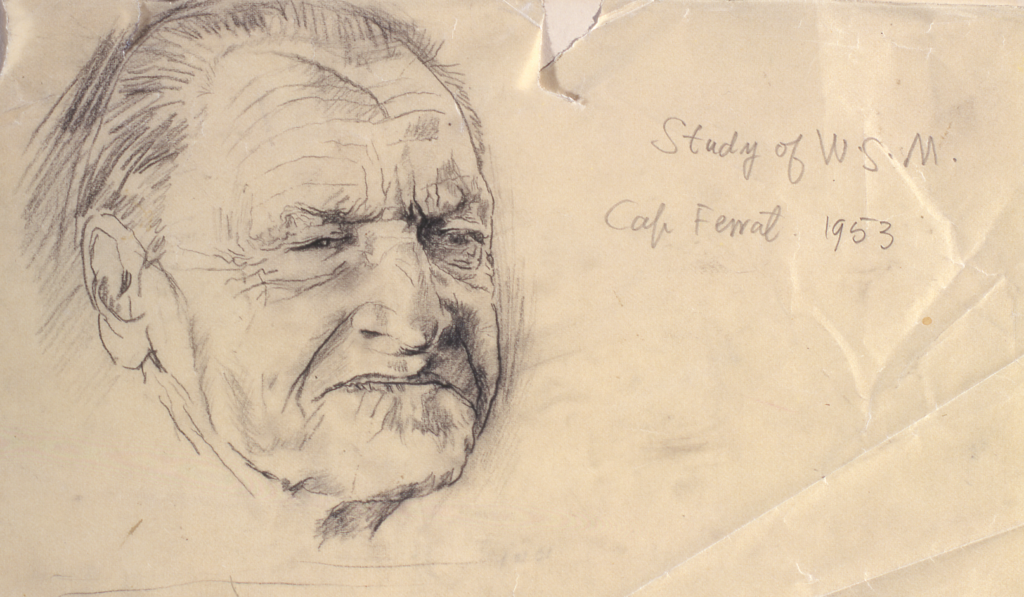
Why? Well first of all, Maugham is one of my favourite authors (I re-read The Razor’s Edge at least every other year) and he was also a friend of Lord Beaverbrook’s.
With his brilliant storytelling mind, he was a natural fit for the story.
The Beaverbrook Art Gallery has several of the studies artist Graham Sutherland did of his portrait subjects (including sketches of Winston Churchill Sutherland did in preparation for the portrait he painted of the great man that Churchill famously destroyed in The Crown!) and I loved this sketch of Maugham in particular for two reasons:
1) There is kind of a pinched nobility to Maugham’s face in the sketch that draws you in and makes you want you to hear his stories. Maugham was 79 years old at the time of the sketch and had lived a long and interesting life.
2) The sketch is of a head only.
In The Frame-Up, most of the residents who live behind the frames have full bodies they can move between paintings in, regardless of whether we can see that body in the portrait or painting, because the artist was thinking of the whole of them whilst painting them.
That is not the case for sketches of body parts, since the artist is focusing exclusively on one thing, not the whole person.
Thus, our friend poor Mr. Maugham is only a head, albeit a head filled with 79 years’ worth of experience.
Imagine the frustration!
In the story, Maugham must rely on the kindness of other residents to take him places, and he often gets left behind, since Lord Beaverbrook has stuck him in a basement workroom to punish him for spreading gossip.
Maugham’s eyes narrowed. “It’s never just us and her,” he whispered. “We live in a world where someone is always watching. The paintings in this gallery have lived here for decades. They get bored, you know, they cause mischief. . . .”
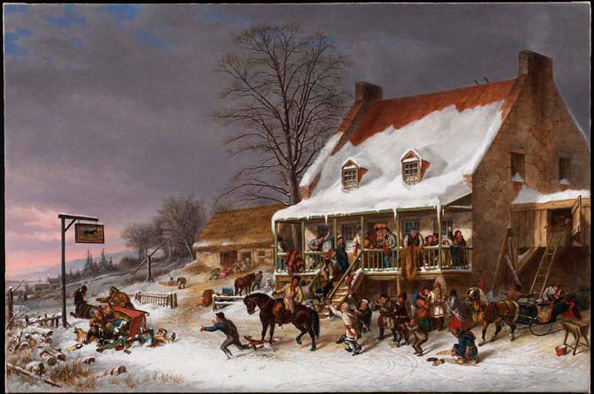
Merrymaking, Cornelius Krieghoff, 1860, oil on canvas
This locale, home to the White Horse Inn, is very important to the plot of The Frame-Up.
The painting is one of the paintings to be restored by the strange art restorer, Archibald Sneely, and is home to dozens of gallery residents.
Mona Dunn escapes into this painting at a critical point in the story, only to find herself surrounded by a less genteel group of individuals.
Merrymaking, painted by Canadian Cornelius Krieghoff in 1860, was one of the most popular paintings in the art gallery and Mona knew why: it was the perfect French Canadian Christmas card, thanks to the party at the White Horse Inn, the snow, and the sleighs. Mona had never been in the painting, but she’d spent many evenings outside the frame, listening to the lively accordions and fiddles, wishing she could go for a sleigh ride.
I knew from the very beginning that Merrymaking needed to be in the book.
A careful examination of the painting shows us that there is quite a lot going on, and some of it seems less than Christmas-card-like.
In fact, there were too many story possibilities in the painting not to include it!
It’s a lively painting, and very accessible, so its no wonder it’s a patron favourite!

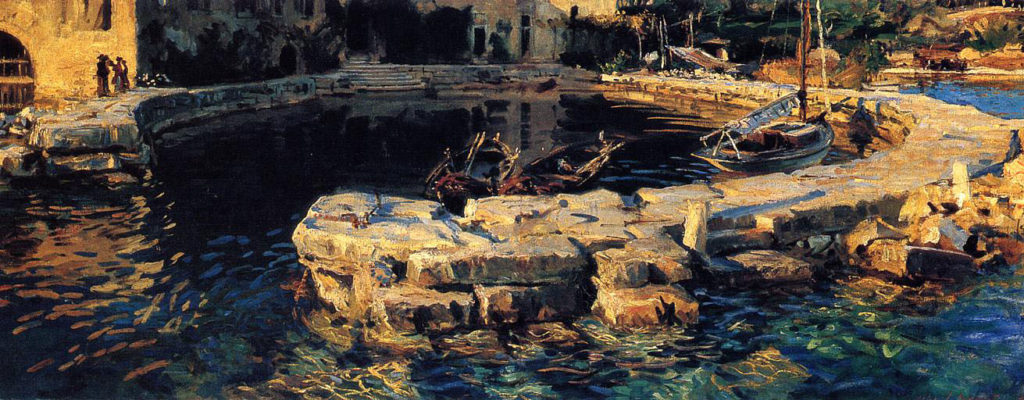
San Vigilio, Lake Garda John Singer Sargent, 1913. Oil on canvas
John Singer Sargent has long been one of my favourite painters, and it’s no coincidence that the boy protagonist in my story is named Sargent Singer.
And this painting, with its azure blues, golden light, shimmery shadows, captures what must surely be one of the most bucolic rocky piers in the world.
Though Sargent is well-known for his arresting portraits, and at one time, was the most highly paid portrait painter in the world, I have always been drawn to landscapes.
In The Frame-Up, San Vigilio, Lake Garda is Mona Dunn’s special place, the place where she goes to escape the often tedious world in which she lives.
Mona sat on the stony pier and dangled her feet in the lake, trying to decide if she should grab a fishing pole. As she stared at the lapping waves, a ridiculous that presented itself to her: did Sargent Singer like to fish? Horrified, she she shut her eyes, but there was no escaping the memory of him staring with such intensity at her portrait, making those funny faces, looking at her as if she was alive. That was the worst, him looking at her as if she were a real person.
If you look carefully at the book’s cover, you may be able to spot the painting!

San Vigilio, Lake Garda plays an important part in the story, and I am confident that when you read the book, you will come to love it as I do!
Next week: one last locale. We’re visiting Quebec, Canada
Most of these paintings have been part of the Beaverbrook Art Collection for decades, which is why they are included in my book.
What would it be like to live in close quarters with the same people for decades on end?
Today, I thought I’d introduce you to an important locale in the book:
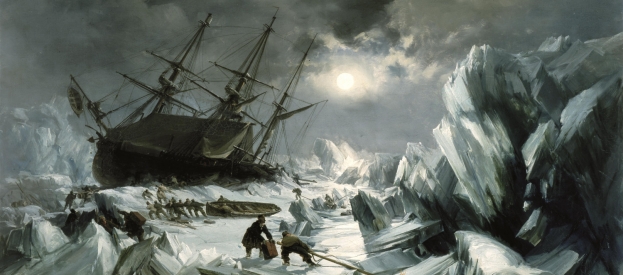
The Crew of the MHS ‘Terror’ Saving the Boats and Provisions on the Night of 15th March (1837) George Chambers, 1838. Oil on canvas
I always knew this painting would be included in the book. There is something so perilous, so frightening about the scene, which depicts the the abandoning of the ship during the ill-fated Franklin expedition.
In his book, Masterworks From the Beaverbrook Art Gallery, Editor Terry Graff says this of the artist:
George Chambers was an English marine painter. At the age of ten, he served as a cabin boy on a coasting vessel and later apprenticed to the master of a brig, or sailing vessel, in the Meditteranean and Baltic Seas. He had a natural talent for art and impressed the captain and crew with his remarkable drawings of sea vessels. At his request, the captain released him from serving his apprenticeship so he could devote himself full-time to his painting. Chambers went on to have several exhibitions, including at Tate Britain, the National Galleries of Scotland, and the Royal Academy of Maritime Pictures, and to become arguably the most important marine painter of the nineteenth century.
In The Frame-Up, the painting serves as an important locale, and our heroine Mona Dunn must brave the stark and dangerous landscape if she hopes to save the day.
I loved the idea that the characters depicted in the painting had to spend their days re-enacting this horrible event, and then, once the Gallery was shut down for the night, could escape and warm up elsewhere.
Personally, I can’t imagine having the nerve to step into this painting, and it says a lot for Mona’s character that she’s willing to. There’s an important secret hidden behind the walls of ice, one that can only be found if Mona is brave enough to try.
The howling wind almost knocked her off her feet, tossing icy particles that stung her eyes. She moved timidly, testing the ice with each step. The wind whirled another cyclone of snow and ice, out of which stepped a man with a grizzled face.
“Lord thundering’, what are ya doing here? It ain’t safe!”
If you look at the cover of The Frame-Up, you might be able to spot this painting!

Don’t worry – more giveaways to come, including an ARC of the Frame-Up VERY SOON!
I was so happy to be finally able to share the final cover of the book this week!
I think Ian Schoenorr did a spectacular job!

And while I love the painting in the center, it’s the frame that blows me away. When the books comes out, it will be in gold foil and I can’t wait to see it!
Best of all, the frame gives you a sneak peek of some of the paintings and some of the story, and is its own little puzzle box.
Greenwillow Books has done a spectacular job designing the book, the highlight of which, along with the cover, will be fifteen colour glossy pages of the masterpieces that are actual characters in the story.
In the coming weeks, I’ll share the paintings with you to whet your appetite, and to explain why I chose them, but today I thought I’d start with why I wrote the book.
There’s background about the book and links for pre-ordering! You can also find the pre-order links on my Welcome Page! Pre-Ordering is a wonderful way to support books and helps drive early sales!
Have you ever wanted to step inside a painting, see what it feels like to be on the other side of the frame? I’ve wanted to do that my whole life, ever since I watched a movie as a kid where the painting’s creepy eyes ‘followed’ the main character around the room. And when I read the first Harry Potter book I fell in love with the idea of the Hogwarts paintings having lives of their own, separate, and often apart, from the wizards they shared a home with.
It’s late 2015. I’m sitting in my living room, staring at my great-grandmother’s painting of a cow. I wonder if it mooed a lot while it was being painted. And then I wonder what the purple lady in a nearby painting will think if the cow suddenly wanders into her painting. Will she shoo it away or invite it to stay for a visit? There’s a story there. A book even.
I’m lucky, I grew up with art and artists and own nice paintings, but I live near a place with amazing paintings: The Beaverbrook Art Gallery, a place I’ve visited since I was young. The more I thought about setting my book at the gallery, the more excited I became. Many of the paintings have been there for decades. Surely by now they’ve created their own world. I started to make a list of the questions I’d like to ask them; do they get sick of one another and of people staring at them; is it hard to sit still for hours on end; do they wish they could talk to us? The more I wrote about their world, the more I wished I could step inside it myself.
Now, when I visit art galleries, I talk to the paintings and imagine what it was like the day they were painted. Oh sure, they don’t usually talk back, but they might someday. And I keep a careful watch out of the corner of my eye, because you never know when one of them might slip up and I finally get a chance to make a new friend. Art has always been magical to me. I hope that when you finish this book, you’ll be inspired to visit an art gallery or to paint a masterpiece of your own. I promise that once you start to think about paintings as living things, they come alive for you. Happy reading and painting, Wendy
What I DIDN’T want in telling this story was for the characters in the paintings to be able to leave, a la Night at the Museum. When you read the book you’ll see the world beyond the frames is its own separate society, with its own rules, and its own problems.
When the two worlds collide, that’s when the fun starts!
Next week, we’ll start talking characters!!!!
Have a great week!
Hop on over to Middle Grade Minded Blog, to read all about the book and take a look!
And since that’s close to Valentine’s Day, I thought we should have a giveaway of not just a hardcover copy of It’s a Mystery, Pig Face! but of Carter Higgins’ wonderful new picture book, This is not a Valentine!
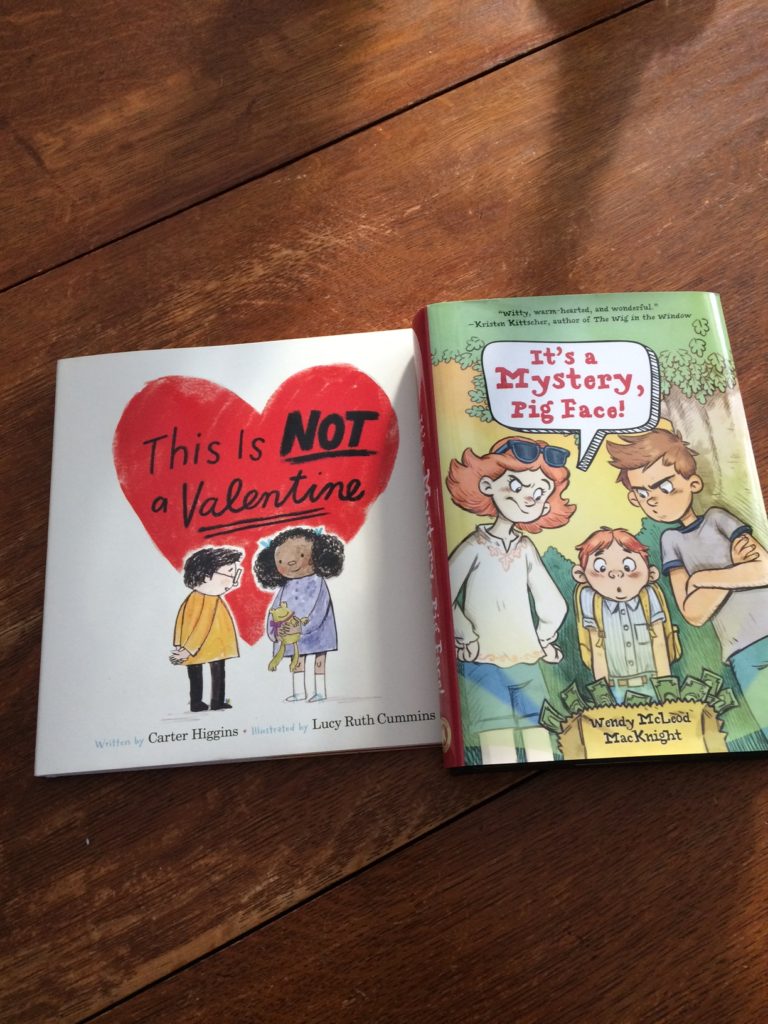
I loved Carter’s book so much and I think you will love it, too! It would be the perfect present for your valentine!

For a chance to win this great prize pack, leave me a message below, or follow me on twitter @wendymacknight or on instagram @wendymcleodmacknight.
I’ll pick a winner next Thursday! And teachers – let me know if you’d like me to throw in a Skype visit, if you win!

I used to make excessive and elaborate goals for myself at the beginning of each new year.
Many were health-related (from both a physical and mental health perspective), some were professional goals, and some were as simple as “have more fun”.
Which may explain why my goal of “Meeting George Clooney at Lake Como for champagne someday never worked out.
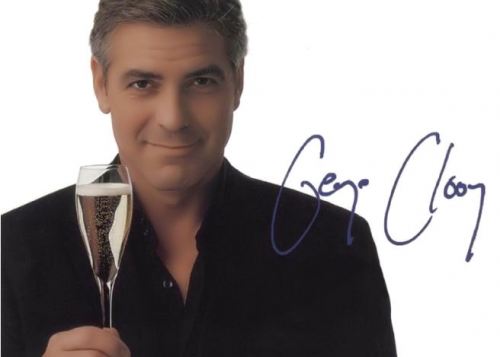
So, for 2018, I’ve made a list of specific writing and personal (though not too personal!) goals for myself:
Next week is my birthday week, so stay tuned, I’m going to come up with a fantastic January book giveaway for you!
Any goals you’re willing to share? I’d love to hear!

Does such a thing exist?
I think of that a lot this time of year, when we are mere steps into a new year, filled with possibilities and hopes.
The reality, of course, is that we bring the old year with us.
We bring our learnings, our lessons, our unfulfilled dreams, our happiest memories.
We start again, hopeful.
So it is with every writing project.
Last year was a huge year for me. My first book was published.
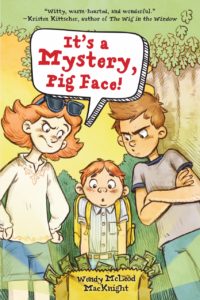
I edited The Frame Up, which is coming in early June. (and boy am I ever dying to share the cover with you!)

Don’t you love those blank book covers on Goodreads? NOT!
I passed in my next book to my editor.
And I wrote two other books that may never see the light of a printed page. Such is writing.
I am beginning another book and toying with two other ideas.
None of those things exist, I believe, save for the existence of the thing that preceded it.
So I enter 2018 not with a clean slate, but with a lined face and heart, and a spark of hope. Mostly, I wish for peace, for me and everyone on this gorgeous blue planet we call home.

I can’t imagine needing anything else.
I’ll end this post with a quote by one of my favourite authors, Neil Gaiman, a quote that seems to pop up all over Facebook and Twitter this time of year, and which is worth hearing again and again:
I hope that in this year to come, you make mistakes. Because if you are making mistakes, then you are making new things, trying new things, learning, living, pushing yourself, changing yourself, changing your world. You’re doing things you’ve never done before, and more importantly, you’re doing something.
Neil Gaiman
Since I can’t go to schools or libraries to do visits, I wanted to create a forum for talking about […]
Yes, I know I’m late. Technical difficulties meant I was locked out of my own website. Seriously????? Whatever, it is […]